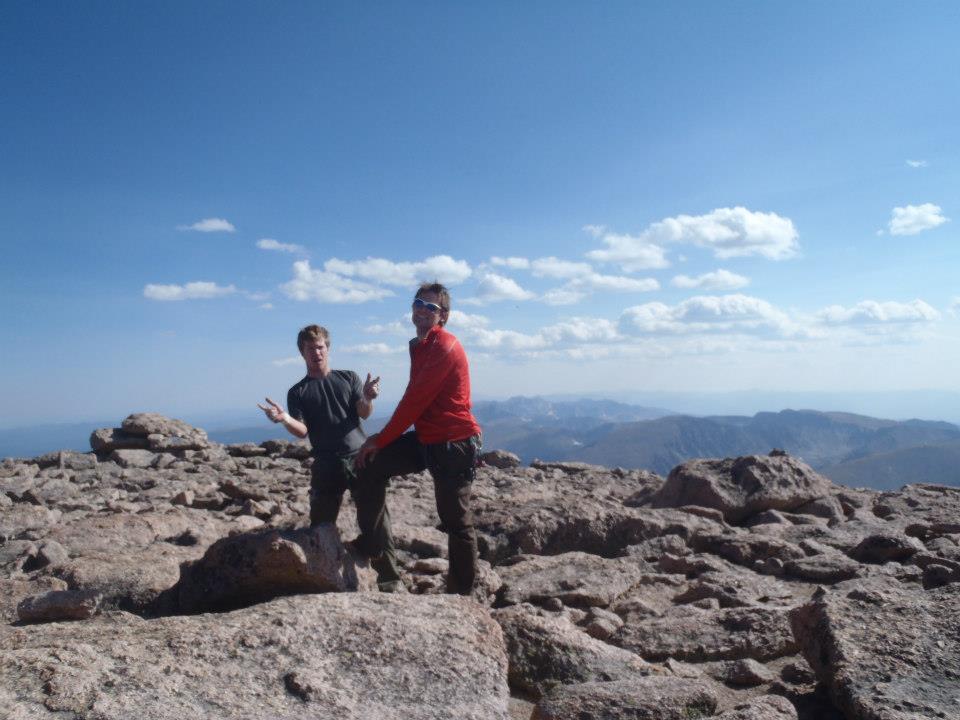
There are a few things burned into my memory from the day I almost died.
The post Complacency Almost Killed Me. Here’s Why Luck Doesn’t Cut It as a Climber. appeared first on Climbing.
]]>
The crisp August air, hinting at fall. The roar of Boulder Creek cutting through the canyon far below. The steady flow of traffic on Route 119, wind funneling up the granite walls. And the image of my partner—eyes wide, white knuckled, clenching the rope barehanded while I hung, midair, above the earth.
It was the summer of 2012, and Gates of Eden at Bell Buttress in Boulder Canyon wasn’t meant to be an epic. At 5.10a, it was supposed to be a quick jaunt. I’d just come back from two months in Squamish and Yosemite, climbing over a hundred trad pitches up to 5.11a. I was confident, maybe a little too much so. My partner, Tom, was a trusted friend who had taken multiple safety and rescue courses with local guides. We’d been ticking off 5.10s in Eldorado and Boulder Canyons to prepare for the Casual Route on the Diamond. We trusted each other.
Gates of Eden starts in a tight chimney with a crack deep in the back. I placed solid cams, but didn’t extend them. When the chimney ended, the line wandered left, zig‑zagging across the wall. By the time I reached the anchors, the rope drag was horrendous—I could barely pull slack.
From the ground, Tom couldn’t see me or even tell whether I was still climbing or anchored. The canyon amplified the wind, the rush of the creek, and the traffic, making communication difficult. We’d used a system before—a set number of rope tugs meant “off belay.” After waiting a while, yelling, and feeling what he thought was the right signal, Tom reluctantly took me off.
Then I leaned back.
At first, nothing happened. The rope drag held me in place. Then I began to move slowly … then faster. I shouted “Whoa, whoa!” and looked down to see him bracing, hands locked on the rope. The drag was so intense he could hold me bare‑handed and, as he later said, could have lowered me hand‑over‑hand if he’d needed to.
He quickly put me back on belay and lowered me safely. We both knew how close that had been. But our reactions couldn’t have been more different. Tom was shaken, and I shrugged it off as “lucky.”
I like to say that I used my get out of jail free card that day on Gates of Eden. The universe cut me a break I didn’t earn. Some people don’t get dealt that card, some never play it, and others—like me—burn it early. But climbing isn’t like Monopoly, and luck isn’t a cup of water you sip carefully until it runs out.
The truth is, luck is fleeting and unreliable. It won’t save you when you skip the basics, fail to communicate, or assume your partner knows the plan. The only way to keep yourself safe is to take responsibility, plan clearly, and respect the risks—because when luck runs dry, there’s no refill.
The post Complacency Almost Killed Me. Here’s Why Luck Doesn’t Cut It as a Climber. appeared first on Climbing.
]]>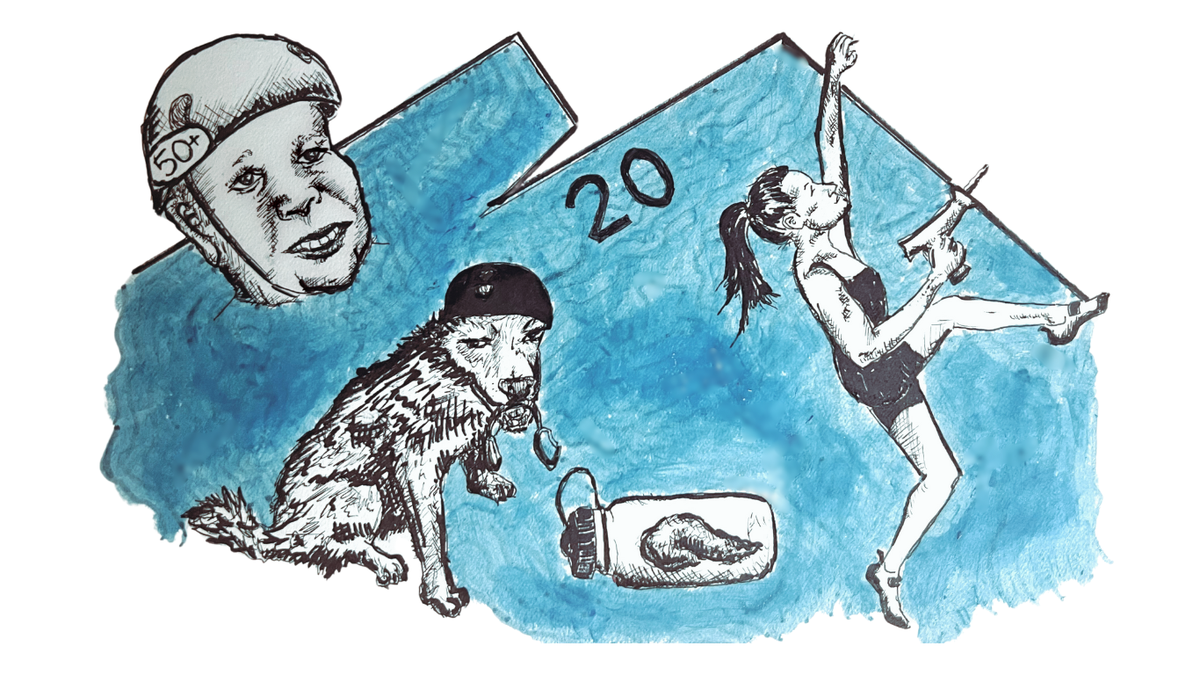
From the greatest moments to unmissable gems
The post 20 Years of Beta, Bickering, and Bold Opinions on Mountain Project appeared first on Climbing.
]]>
For many climbers, it’s hard to remember a time before Mountain Project. This online hub of route info and conversation didn’t just digitize climbing—it revolutionized how we access and share beta. Now, as Mountain Project celebrates its 20th anniversary, it has done for thousands of climbers what it has done for me: provided a treasure trove of information on routes, destinations, training, and gear. Along the way, it has also evolved into a vibrant—and at times heated—community where climbers gather to debate hot topics, search for answers, and, of course, nerd out about all things climbing.
Mountain Project: A Quick and Dirty History
Mountain Project traces its roots to ClimbingBoulder.com, a site launched in 2000 by the late Myke Komarnitsky to document routes in Eldorado Canyon and the greater Boulder area. As its popularity grew, similar “Climbing[Location].com” sites began to pop up, covering areas like Moab, Red Rocks, and Joshua Tree.
Eventually, recognizing the need for a unified platform, Komarnitsky teamed up with climbers Andy Laakmann and Nick Wilder in 2005 to merge these scattered regional sites into a single, comprehensive resource: Mountain Project. The goal was simple but ambitious: create a centralized, user-driven climbing database that covered the entire country, as well as international destinations.
The platform quickly became a go-to resource for climbers, offering beta, topos, and community-driven discussions. In 2015, REI acquired Mountain Project, revamping its infrastructure and increasing its reach. But in 2020, REI divested, returning the site to its founders before it was ultimately acquired by onX Maps, which provides digital mapping apps for hunting, off-roading, and backcountry exploration. Through it all, Mountain Project has remained true to its mission: providing free, crowd-sourced climbing beta. Supported by user contributions and volunteer administrators, it continues to be one of the most relied-upon climbing resources today.
Over the years, the site has also become a gathering place where climbers debate, commiserate, and occasionally lose their minds over the same recurring topics. From the never-ending bolt wars to discussions about racism in climbing, from legendary trolls to crag-related poop etiquette, Mountain Project has hosted it all. What follows is a look back at some of the most infamous, beloved, and hilarious moments from the past two decades of the site’s community.
Battles Over Bolts: No Matter What You Do, Someone Will Be Mad
Few debates on Mountain Project have raged with more consistency—or futility—than bolting climbs. Traditionalists decry excessive bolting as a threat to climbing ethics, while sport climbers argue for safety and accessibility. Somewhere in the middle lies a boiling pot of internet outrage.
One of the most infamous examples centers on Archangel (5.12c) in Boulder Canyon. The story of Archangel‘s first ascent had been shrouded in a bit of mystery. While it’s now understood that it was originally freed by Thom Byrne in 1988 using what’s now called a headpoint style (rehearsed on toprope, then led), the route went largely unnoticed until 2013, when prolific first ascensionist Chris Weidner added bolts to make it more accessible. Citing safety concerns, loose blocks, and minimal traffic, Weidner defended the retro-bolting but admitted he “should have made more of an effort to get a hold of” Byrne beforehand.
Purists were livid, and the route’s comment section went on to read like a daytime soap opera. One commenter blasted the move as “dumbing down a trad route,” while others celebrated the transformation into a now-classic sport climb. Even John Long weighed in, mourning the loss of first ascent integrity. After weeks of forum warfare, Weidner conceded—removing some bolts, but not all, preserving a controversial middle ground.
Meanwhile, halfway across the globe, a different bolt drama unfolded in Patagonia, Argentina. In 2012, Hayden Kennedy and Jason Kruk made a “fair means” ascent of Cerro Torre’s southeast ridge—avoiding Maestri’s infamous bolt ladders from the Compressor Route, which had been drilled into the face using an actual air compressor. On the way down, they chopped most of the route’s bolts, including those on the iconic headwall. For some, it was a long-overdue act of alpine justice. “Good on those boys for starting the cleanup,” wrote one supporter. Others called it destruction for ego’s sake. “Chopping bolts just because you can do the route with gear is poorer style than putting them in the first place,” argued one critic.
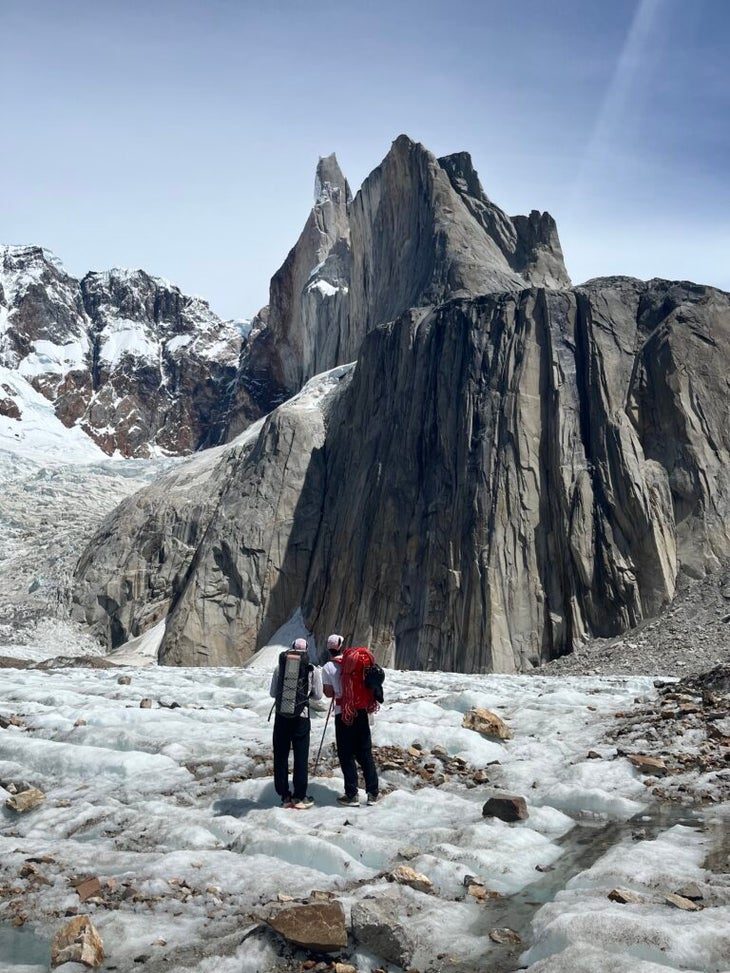
Another climber summed up the frustration from a more personal angle: “It made the route attainable for people like me. I hoped to one day give it a try.”
Mountain Project users were quick to note the irony. As one commenter on Archangel put it with brutal efficiency: “Apparently, chopping bolts (Kennedy/Kruk – Compressor) and adding bolts (Weidner – Archangel) earn the same response.”
And so, the bolt wars continue—damned if you do, damned if you don’t, and always guaranteed to spark another round in the eternal ethics debate.
Climbers Over 50—and Uniting Over Memes
While debates rage on, Mountain Project also serves as a hub for connection and shared passion. The forums cultivate a strong sense of community among climbers, with bonds formed over everything from practical advice to shared experiences.
What started as a simple question in 2018 (“Are there any other climbers over 50 out there?”) has grown into one of the most enduring and positive threads in Mountain Project history. Today, New and Experienced Climbers over 50 has become a one-stop-shop for climbers over the age of 50 to share advice, ask questions, and uplift one another. The forum has spanned hundreds of pages (this is due to the fact that once a post amasses over 50 pages, a new post must be started).
Whether reconnecting with the sport after years away or pushing personal limits well into their later years, climbers here have found camaraderie, wisdom, and inspiration. As one member put it, “This thread is like a warm campfire where we swap stories, encourage each other, and prove that climbing doesn’t have an expiration date.” The ongoing conversation reflects not only the passion for climbing, but the strength of a community that celebrates every ascent, no matter the grade or experience level.
Just as New and Experienced Climbers over 50 has fostered camaraderie, another legendary thread has also brought climbers together in a different—but equally meaningful—way: humor. The Meme Thread, started in 2012, has spanned hundreds of pages, serving as an ongoing creative outlet where climbers connect through wit, satire, and shared absurdities of the sport. From poking fun at the misery of alpinism, the wimpiness of sport climbing, or the ridiculousness of bouldering (let’s be real: this is probably just because it’s hard and it terrifies them), the thread has become a digital gathering place for playful roasting and inside jokes.
As with any long-standing tradition, there is only one unbreakable rule: no text in the meme thread. The quickest way to get “hazed” is to forget this, which inevitably leads to someone posting a meme with the phrase “No text in the meme thread.” It’s a rite of passage for new participants, a running joke for veterans, and a testament to the thread’s unique culture. Like the Climbers Over 50 thread, it remains one of the most continuously positive and interactive spaces in the site’s history, proving that while climbing is often serious, climbers themselves don’t always have to be.
Sven and the “4-Plan”: Troll, Sage, or Both?
In the digital folklore of Mountain Project, the enigmatic figure of Sven Lavransen in the early 2000’s appears as a fleeting, almost mythical entity. He materialized in the Hands of Destiny (5.12d) comments section to bestow upon the community his climbing wisdom. He proclaimed that the route had given him “a great satisfaction for the flash.” Sven’s gospel centered on the “4-plan,” a cryptic training ritual that he explains consists of “4 routes taken 4 times,” designed to unlock a flash.
Like a visiting sage, Sven elaborated: “We train by climbing 4 routes of nearly the same level and on the same type of climbing rocks. These are not tried to flash but only to redpoint. When 4 are done, we try the flash route where the goal is now to flash.” His methods, though meticulously detailed, drew both fascination and ire. “Hey Sven,” an anonymous voice echoed through the digital void, “this isn’t a forum for you to spray about every flash you do. We know you are a great climber, and Boulder standards are low.”
Sven, seemingly unfazed, continued to share his esoteric knowledge, creating a captivating drama that kept the climbing community engaged. Whether a genuine beta-sharer or, more likely, a masterful troll, Sven’s brief but intense presence left an enduring mark, serving as a reminder of the quirky personalities that enrich the climbing world. His other comments, sprinkled across a few more Boulder area routes, maintained the same air of playful obfuscation, and then he was gone. As quickly as he’d arrived, Sven disappeared, the digital winds carrying him back to his “hometown” of Bergen, Norway, where he’d presumably continue his effortless flashes with his mysterious “4-plan.”
While there have been many forum trolls in the history of Mountain Project, Sven was of the highest order: leaving the audience craving an encore that would never come.
Renaming Offensive Route Names
A particularly contentious moment came in June 2020, when Mountain Project began redacting route names deemed offensive, often in response to user-flagged reports. In some cases, names were officially changed—such as Slavery Wall in Ten Sleep, Wyoming (now Downpour Wall)—if the original developer or first ascensionist expressed interest in renaming.
While the original names still appeared in old print guidebooks, Mountain Project moderators would change the names on the website, often with the support—or at least the lack of objection—of the original developer or first ascensionist. At the heart of the debate was the ultra-classic Aaron Huey line, Happiness (5.12b), originally “Happiness in Slavery,” named after the 1992 Nine Inch Nails song. (Huey admitted this needed updating regardless of its origins.)
Still, many offensive route names remain unchanged. When the first ascensionist declined to change the name, couldn’t be contacted, or was no longer living, the name appeared only as “redacted”, with users having the option to further click and see what the original name was. Even before 2020, threads like this one on misogynistic and problematic route names were gaining momentum, pining inclusivity against tradition while widening the gap by asking important questions.
Supporters hailed the move as progress. “This shines a light on the racism and sexism in climbing culture,” wrote one user. Others saw it as overreach. “Route developers name their climbs,” argued another. “MP shouldn’t have the right to change that.”
The thread spanned 16 pages before moderators locked it—though many new threads were created—highlighting deep divisions in the community. The debate over renaming routes underscores the broader challenge of balancing tradition and historical precedent with the evolving pursuit of equity and inclusion in the sport. Whether viewed as necessary progress or an erasure of history, the conversation around inclusivity in climbing is far from over.
The Forever Threads: Dogs, Dumps, and Dream Towns
Over the past 20 years, Mountain Project has proved itself as a gladiatorial arena where climbers wage the same tired battles, over and over, for eternity. Among the most persistent offenders: the eternal war over dogs at the crag, the never-ending search for the perfect climbing town, and the delicate but ever-urgent matter of human waste disposal.
Crag Dogs: Nuisance or No Big Deal?
The debate over dogs at climbing areas constitutes one of Mountain Project’s most reliable dumpster fires. Dog owners believe their precious pup is a well-behaved angel who could never cause a problem. They often say this while their dog is, in fact, causing a problem. Opponents, on the other hand, have a lengthy list of grievances: barking, digging, chasing wildlife, stealing food, knocking over gear, picking fights with other dogs, and, of course, the omnipresent issue of feces.
One exasperated climber noted, “It is not OK for your dog to leave a pile of shit at the bottom of a crag. This is unconscionable and should never happen. It is not the dog’s fault, but the owner’s. CLEAN UP AFTER YOUR DOG or don’t bring your dog.”
Yet the problem persists. Discussions on this topic pop up like a game of whack-a-mole, whether it be in route comments or forum posts. One particularly sardonic user summed up the entitled dog owner attitude: “But what am I supposed to do if I still want to climb? My dog is a demon and no one wants to dog sit. Am I supposed to take responsibility for my decisions or something?”
The Search for Eden
Another recurring Mountain Project fever dream is the quest for the perfect climbing town. This mythical paradise boasts affordable housing, plentiful jobs, year-round good weather, and an endless supply of surprisingly uncrowded world-class routes just minutes from your front door. Reality doesn’t offer such a place. That doesn’t stop climbers from crowdsourcing the impossible (or building their own algorithm).
Predictably, users recommend the same cities—Denver, Salt Lake, Vegas. What follows: A chorus of people explaining why those cities are, in fact, unlivable hellscapes.
Meanwhile, a few hopefuls try to pitch some obscure town as “the next big climbing hub,” only for locals to immediately jump in with, “Nope, terrible place, don’t come here” or a “Nothing to see here, move along“ approach, attempting to dissuade potential newcomers with tongue-in-cheek warnings. One user joked, “Don’t move to New Mexico, it’s all terrible here.” Meanwhile, users mock Boulder with the performative disdain of an angsty teen trashing whatever band happens to top the charts—loudly, repeatedly, and with just enough effort to make you wonder if they secretly love it.

The typical plea for advice goes something like this: “I know there have been lots of threads like this, but I am considering relocating and would like some opinions on the following areas. I’m looking for a place with a good variety of climbing within a short drive (after-work cragging), good weather for much of the year, and plenty of other outdoor activities like mountain biking and skiing. Prefer trad and alpine rock, but sport climbing for training would be nice. Cost of living is important, hence the exclusion of places like Boulder. A good, friendly climbing community would be a plus.”
The responses, as always, will be a mix of “just move to Chattanooga” and “nowhere is good, give up.”
Poop Predicaments
And then, there’s the crappiest debate of them all: human waste. Every few months, someone stumbles across an improperly buried deposit at the base of a climb and, horrified, revives the discourse. The general consensus is that people should pack out their waste. But that doesn’t stop the inevitable arguments about how inconvenient, unnecessary, or “not that big of a deal” it is.
The frustration is palpable: “You may think that by walking past the start of the climb 50 feet you were actually being discreet, but believe it or not, there are other climbs over there. I know the wag bag dispenser was empty, but if you had the forethought to bring toilet paper and use it, surely it wouldn’t be too hard to make even a minimal effort to bury your waste. The base of routes in Red Rocks is not your toilet.”
Of course, because climbers are nothing if not resourceful in their pettiness, even this conversation eventually devolves into a mix of sarcasm and gallows humor. “You found my poop? I’ve been looking for that everywhere.” The original poster responded: “I can offer you a six-pack of your choice for its safe return—it has sentimental value.”
But no forum argument about human waste has quite reached the legendary status of the “poopocalypse” on Epinephrine, the famous Red Rock multipitch, which draws gumbies and seasoned veterans from all over the world. One unfortunate climber, caught between necessity and Leave No Trace ethics, found himself in a situation so dire it could only be retold in hushed tones (or, more realistically, in all-caps in a Mountain Project trip report).
“Past the chimneys, we both had to go pretty badly but kept pressing on, not wanting to leave any poop on route. On the final 5.9 pitch, my partner pulled the bulge and realized he couldn’t wait anymore. His instinct was to go right there, but there was absolutely no way to dispose of it. I told him he had to try and go in the almond bag so we could carry it out. Having never used a wag bag, he mostly missed. He got a great deal of it on his hand and down the side of the bag. I told him that bag couldn’t go in my backpack like that, so we used a nearby stick to push it into an empty Nalgene…”
The horror continued when, in a tragic twist of fate, the bottle containing the ill-fated excrement fell off the ledge, adding a fresh coat to sections of the climb.
“We yelled ‘rock!’ as loud as we could, but unfortunately, we could do nothing to stop the ‘poopocalypse’ (as people are now calling it) from becoming literally the worst poop I have ever witnessed. My partner is dreadfully embarrassed, and we’re both sorry this happened on a beloved and classic line.”
While the climbers involved were mortified, the community did what it does best: roast them in the forums with a mix of righteous indignation and dark humor. And so, the cycle continues, with new climbers discovering (both figuratively and literally) the same problems, doomed to hash out the same debates in perpetuity.
The future of Mountain Project
In the summer of 2011, I found myself with a stack of printed route descriptions from Mountain Project, ready for my first big road trip to Yosemite, and Squamish, British Columbia. Since then, Mountain Project has evolved—no more MapQuest-style printouts, thanks to the convenience of their app.
I’ve spent countless hours reading the forums, contributing routes, and adding crags, especially for international destinations where Mountain Project isn’t as widely used. These days, it faces competition from platforms like 27Crags, TheCrag, Kaya, and 8a.nu. Each offers its own take on digital climbing resources.
Despite the shift toward digital, I’ll always love physical guidebooks, and that won’t change. But there’s no denying that online platforms have transformed how we share beta, find new routes, and debate the issues—some important, some just for the sake of argument. Whether it’s a passionate ethics discussion or just another internet squabble, Mountain Project remains a vital part of our community, shaping how we connect, learn, and, ultimately, climb.
The post 20 Years of Beta, Bickering, and Bold Opinions on Mountain Project appeared first on Climbing.
]]>
Everything you need to know about the Magic Wand
The post This New Portable Stick Clip Has Transformed How I Sport Climb appeared first on Climbing.
]]>
During my first trip to the sport climbing mecca of Ten Sleep Canyon, Wyoming, in the summer of 2015, I spent about a week climbing solo before my friends arrived. In the meantime, I partnered up with a few random climbers—one of whom my friends and I would later nickname “Disney Land” due to his intense disdain for stick clips. He argued that sport climbing had become too safe, comparing it to a trip to Disney Land, and adamantly refused to use a stick clip to “keep things real.”
Back then, he was far from alone in his sentiment. Many climbers scoffed at stick clips, seeing them as unnecessary or even cowardly. Fortunately, attitudes have shifted, and the climbing community has largely embraced their use. Like many others, I don’t climb for the thrill of danger—I’d much rather keep my ankles intact than risk a ground fall while trying to clip the first or second bolt.
If “Disney Land” were to learn now about new stick clips designed for use mid-route, he’d be even more disgusted—but not me! A tool that could make sport climbing even safer without compromising the challenge? It felt like a game-changer. But first, let’s explore the need driving this gear evolution in the first place.
The Challenges of Mid-Route Stick Clipping
While using a stick clip from the ground is now widely accepted, carrying one up a route is still less common. For one, climbing with a long stick clip dangling from your harness is awkward, and the idea of falling and risking impalement isn’t exactly appealing. Second, realizing mid-route that you can’t commit to the crux and need to clip into a bolt, drop a loop of slack, and haul up the stick is impractical and annoying.
Like many sport climbers projecting routes far above their limit, I’ve long abandoned my pride and embraced whatever tools help me get up the wall. When attempting a route at your limit for the first time, chances are you won’t even make it to the anchors. If you’re stubborn, you might keep falling at the crux, taking whippers, pulling back up the rope, and doing it all over again—much to the frustration of your belayer.
By clipping up, you can rehearse the moves on top rope, feel out the holds, and make more efficient progress, all while the impatient climbers waiting their turn appreciate the faster pace.

The Rise of Portable Stick Clips
In the spring of 2023, I first learned that climbers have devised compact, portable, and extendable stick clips that can be clipped to a harness, taking up no more space than a quickdraw. These have been a game-changer for flailing climbers looking to “clip up” a route without the bulk of a traditional stick clip.
While the “stiffy” draw—a reinforced, extra-long dogbone—has been around for years, it’s hardly useful when the next bolt is 10 or more feet away. Instead, resourceful climbers have repurposed selfie sticks, telescoping flagpoles, and other extendable tools to create lightweight, on-the-wall stick clips, allowing them to reach the next bolt and anchors by any means necessary.
The idea for my first “wimpy stick,” as my wife and I called it, came from my friend James, who got the idea from a friend, who got it from another friend, and so on. I’d use it at the crag, climbers would ask about it, I’d show them the design, and they’d go make their own. We kept saying, “Someone should really make a legit version of this—it would sell like crazy.” And finally, someone did.

The Magic Wand: A Portable Stick Clip
When Will McNeill, a Colorado climber with a background in software engineering, found himself with some spare time, he began tinkering with the idea of a more portable stick clip. “I’ve been a tinkerer for as long as I can remember,” McNeill says. After a decade in the software industry, he left with the intention of returning after a few months—but instead, he stumbled into designing the Magic Wand, the flagship product of his burgeoning company, Hangdog Climbing. What started as a way to pass the time has turned into his main focus.
Originally a trad climber, McNeill has been climbing for about 15 years, and eventually shifted his focus to sport climbing and long-term projecting. The inspiration for the Magic Wand came years ago while he was in Rifle. “I remember exploring a route for the first time and not really understanding why I couldn’t do a particular move that other people were making look easy,” he recalls.
After struggling through the section and discovering he had been missing a key hold, he watched another climber approach the same spot. “She got to that section, didn’t find the slot, whipped, pulled back up,” he recalls. “But instead of just trying again, she whipped out this tiny stick clip, clipped up to the next bolt, found the slot, and did the sequence easily [on her] second try. ”
McNeil wanted one for himself—and that experience planted the seed for the Magic Wand. “When I eventually got a good look at one of those sticks, I immediately knew I could make a better version,” he says. Early prototypes involved a plastic bottle taped to a Kong Panic draw—functional, but far from refined. Through extensive trial and error, he developed the current 3D-printed design, going through at least 100 prototypes along the way.
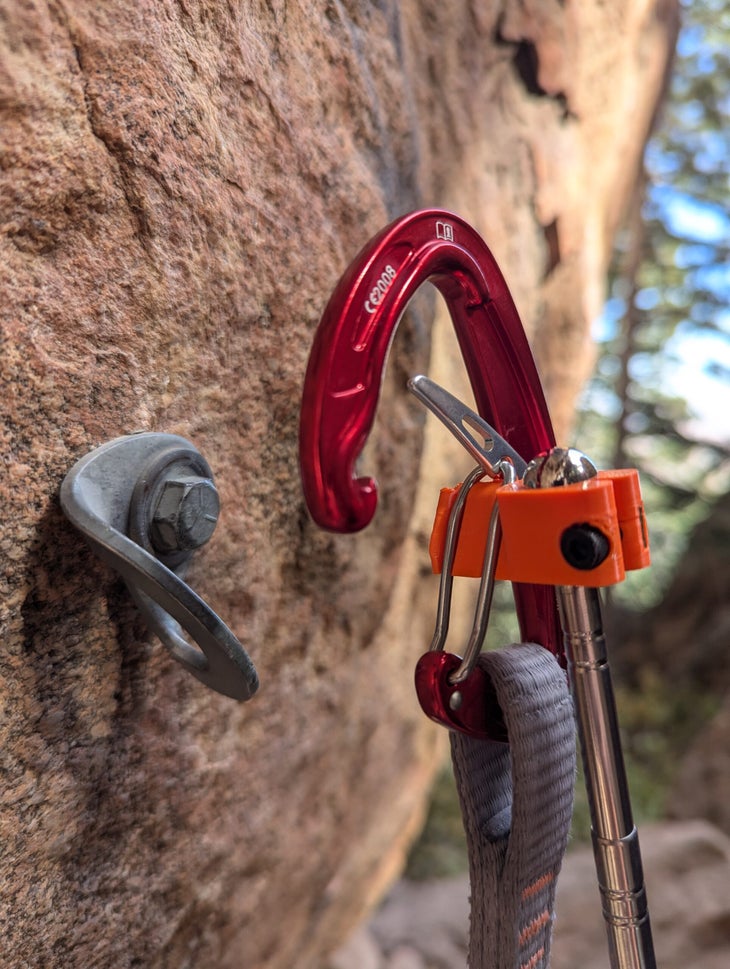
Magic Wand Features and Carabiner Compatibility
The Magic Wand is the most compact stick clip on the market, designed specifically for mid-route use. It extends to two meters (6.6 feet), enough to reach the next bolt on most modern sport climbs. And it fully retracts to just 30 centimeters (one foot), making it compact enough to climb unobstructed. Weighing only 110 grams, it’s barely heavier than a standard quickdraw.
The Magic Wand is available in three versions, each designed for compatibility with different carabiners, which must be purchased separately. One of those compatible carabiners, the Mad Rock Trigger Wire, has unfortunately been discontinued. The Kong Panic offers a solid trigger mechanism but is bulkier and heavier, and it’s only available with a stiff dogbone. The Climbing Technology Tricky version is compact and light, but features a slightly finicky trigger mechanism. Both work equally as well, it just comes down to preference and availability.
Once you’ve purchased your Magic Wand and your preferred compatible carabiner, you simply take the bolt end carabiner off of a quickdraw you already own, and replace it with the compatible carabiner.
Watch the Magic Wand in action
How to Use the Magic Wand
Anytime I’m about to head up a route that’s well above my onsight grade—and know that I’ll likely struggle with some sections—I clip my Magic Wand and the compatible quickdraw to my harness. Or, maybe I’ve been on the route a few times and want to clip up at a certain section to rehearse the moves on top rope. Either way, the Magic Wand makes it easy.
First, clip yourself directly into a bolt and have your belayer give you some slack. Take the Magic Wand off your harness and extend it. Then, grab the quickdraw you assembled mentioned earlier, open the top gate, and secure it open with the trigger wire.
The top of the Magic Wand features a “saddle” that holds the quickdraw in a stable position. Place some rope into the bottom half of the quickdraw and stick clip as you normally would. Be sure to keep hold of the loop of rope to prevent excess weight from bending the extended Magic Wand.
Unlike a traditional stick clip, the Magic Wand is designed only for placing a quickdraw—it won’t clip the rope into a draw that’s already hanging. Once your quickdraw is secured to the next bolt, or to a perma-draw, have your belayer take in the slack and either top rope your way up or pull on the rope to reach your high point.
Pros, Cons, and Who This Stick Clip Is For
The Magic Wand has plenty of advantages. It’s lightweight, easy to use, and so compact that you’ll barely notice it on your harness. It reaches the next bolt on most modern sport climbs (though don’t expect it to help much on runout ‘80s and ‘90s routes). Unlike a traditional stick clip, it’s easy to travel with, takes up no space in your pack, and costs significantly less.
That said, it does have some drawbacks. When fully extended, it can feel flimsy and certainly break, especially when using a heavier rope. It’s also easy to drop and requires purchasing a compatible quickdraw with a top gate that stays open. Still, for most climbers, the benefits far outweigh the downsides.
So, who is this for? “The Magic Wand today has become an incredible tool for projecting sport routes, enabling a whole new set of tactical options that aren’t feasible without it,” McNeill explains. It’s particularly useful for sport climbers working at their limit, but its applications go beyond that. “It can be a get-out-of-jail-free card for someone worried about getting in over their head, or a tool for people working on their fear of falling to push their comfort zone just the right amount,” he adds.
The Magic Wand also has other applications beyond sport climbing and projecting. It’s useful for aid climbers reaching distant bolts or fixed gear, photographers positioning themselves for the perfect shot, and route developers working on new lines.
As climbers continue to push their limits, tools like the Magic Wand provide new ways to stay safe, project smarter, and climb with more confidence. “People are coming up with interesting uses all the time,” McNeil says. For anyone looking to level up their sport climbing tactics, this little stick clip might just be the unlock they need.
Just remember—no tool can replace good technique, confidence, and the willingness to take a fall when the time comes.
Climbing is inherently dangerous. The use of this product and the techniques described in this article do not eliminate the risks associated with climbing. Always seek professional instruction, understand the limitations of your gear, and make informed decisions while climbing. Use at your own risk.
The post This New Portable Stick Clip Has Transformed How I Sport Climb appeared first on Climbing.
]]>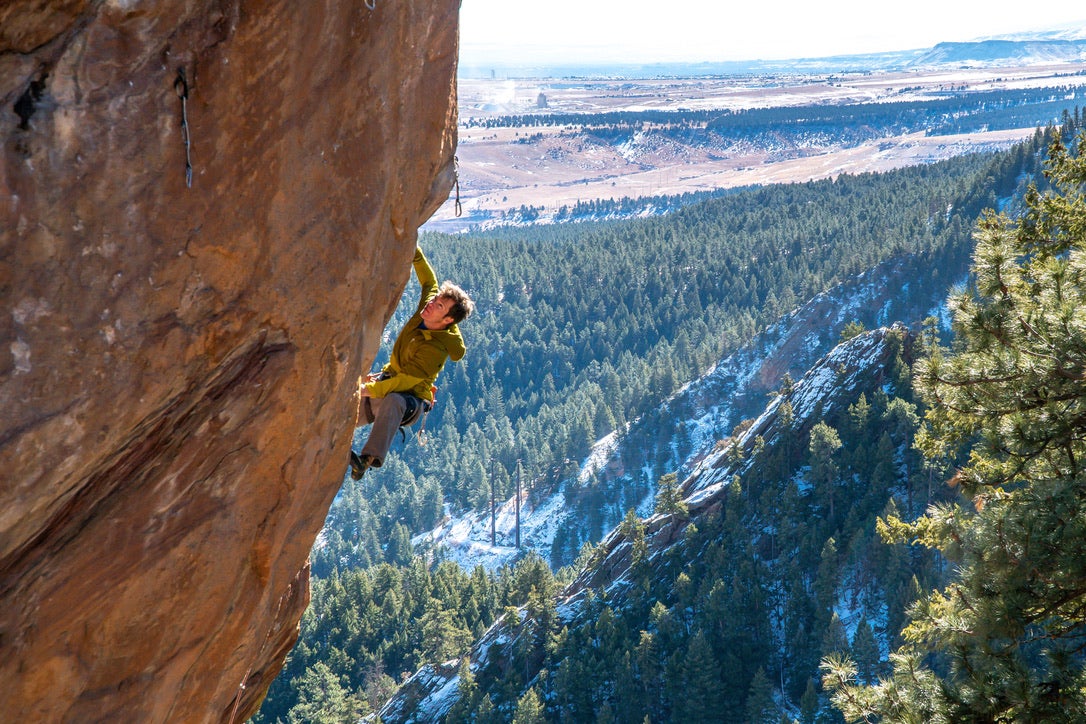
How climbers can use this newish grading tool made by French developers
The post Climbing Grades Can Be Erratic. Is Darth Grader the Answer to More Consistent Grading? appeared first on Climbing.
]]>
At any crag, climbing gym, or campsite, climbers are often overheard dissecting routes into smaller segments: “It’s got a V5 boulder problem crux, a long section of 5.12b, and a bad rest right before the hard sequence.” Our various grading systems attempt to make sense of the path up a certain section of rock. But grading is inherently subjective and varies based on personal experience, climber type, local standards, and conditions.
How Climbing Grading Typically Works
The Yosemite Decimal System (YDS) and the French grading system are the two most widely used methods for rating the difficulty of rock climbs, helping climbers select appropriate routes. The YDS, primarily used in North America, employs a decimal system (e.g., 5.12a) to provide detailed grading, whereas The French grading system, common in Europe, uses a numerical and alphabetical scale (e.g., 7a+). Typically, grading is determined by the first ascensionist and experienced climbers through consensus, considering factors like technical difficulty, steepness, and overall effort required.
The subjectivity of grades can be frustrating for climbers at all levels. A move that feels impossible when you’re pumped and fatigued can seem laughably easy after a rest. Grades attempt to account for factors beyond technical difficulty. Endurance, mental strength, conditions, and beta (the sequence of moves) all play a role. And traditional grading systems rely heavily on perception, leading to inconsistencies across regions and styles.
Darth Grader: A Systematic Approach to Grading
Enter Darth Grader, a platform that claims to propose a more systematic and mathematical way of assigning climbing grades. Darth Grader was born from a passion for climbing and a curiosity about the way routes are graded.
Created in 2022 in Grenoble, France by a group of climbers and routesetters with skills in mathematics and programming, the tool began as a simple console application designed to test a hypothesis: Could the breakdown of a route’s sections and rests accurately predict its overall grade? The early results were surprisingly precise, and the enthusiastic feedback from the founders’ friends inspired them to develop a web version. Today, Darth Grader aims to enrich the climbing experience by offering a structured way to compare personal impressions with established grades, encouraging dialogue and fostering consensus within the climbing community.
Could this tool bring some objectivity to the otherwise subjective exercise of grading?
Watch a walk-through of how the Darth Grader tool works
How Darth Grader Works
Darth Grader is a free, interactive website that breaks climbing routes into smaller sections—such as cruxes, endurance sequences, and rests—and assigns points to each. Hard cruxes and poor rests increase difficulty, while good rests reduce it. The system then calculates a total grade based on these inputs, minimizing the biases found in traditional grading methods. Each section is assigned a grade, either a V-grade for a crux or a YDS grade (e.g., 5.12a) for a longer section, reflecting how that segment would feel when you’re fresh, right off the ground.
The tool works by linking each section through a step-by-step process using an iterative algorithm and a mathematical parametric formula, which accounts for factors like difficulty and rest quality. Instead of relying on artificial intelligence or large datasets, Darth Grader is calibrated using a trusted database of benchmark routes—climbs with unanimous grade agreement and repeated ascents by many climbers. This ensures its calculations reflect real-world climbing experiences.
Additionally, the tool bridges different grading systems—such as the French scale, the Yosemite Decimal System (YDS), the V-scale, and the Fontainebleau—using correspondence tables. These help ensure Darth Grader remains accurate and accessible, regardless of climbing style or grade, from moderate beginner routes to the most challenging test pieces.
One of Darth Grader’s key innovations is factoring in the quality of rests. Climbers can categorize rests as good, medium, bad, or nonexistent. A good rest allows near-full recovery, while a bad rest offers little relief. The quality of a rest significantly influences how climbers perceive the difficulty of the next section. However, subjectivity still plays a role—a “good rest” for one climber might feel useless to another, depending on fitness level and experience. That boulder problem at the top of the route might feel like a V7, but actually only be V3 and you’re just pumped out of your mind.
The tool can also be used to calculate bouldering grades. Boulders can be broken down by either a single move, longer sections, or both. However, there are no rest sections factored in. Furthermore, the website has a multi-pitch function that can determine the overall “effort” required to send an entire multi-pitch route. For example, if a multi-pitch has three pitches of 5.12a in a row, it would calculate the entire route as having the overall grade of 5.12d, since that’s the “effort” required to send the entire thing.
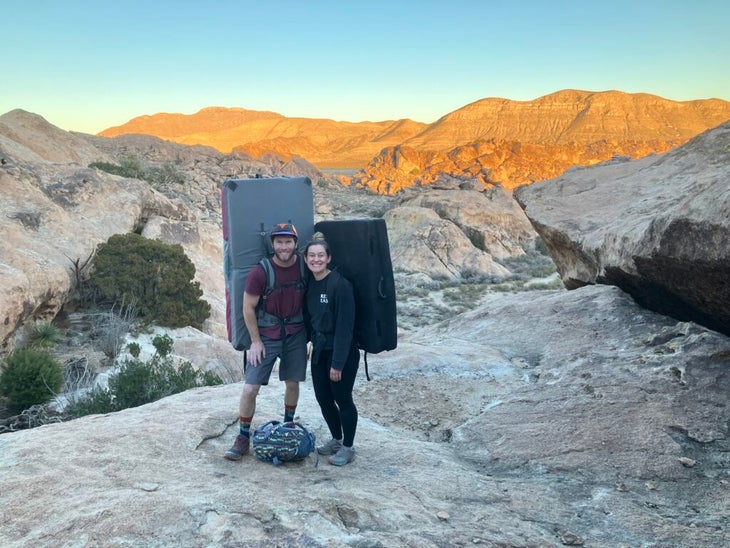
How to Use Darth Grader for Your Climbing
While Darth Grader isn’t a replacement for traditional grades, it’s a valuable tool for breaking down routes and understanding their difficulty. Imagine a climb you’ve projected for weeks. You can recall every move, rest, and crux. Using Darth Grader, you could work backward from the consensus grade to break it into sections and better understand how the overall difficulty is calculated.
Take Primate, a popular 5.13b in the Flatirons of Boulder, Colorado. It might be described as: 5.12a > medium rest > V5 > good rest > V5 > good rest > 5.10d. Darth Grader calculates this as a soft 5.13b, provided there’s agreement on the section grades and rest quality. But if the first crux feels more like a V6, Darth Grader will still land on 5.13b, though a harder version of the grade.
This level of detail helps climbers refine their understanding of a route’s difficulty and maybe even better train for a project. If you know the route has several V5 cruxes in a row with good rests between each, you can hit the bouldering gym and do some on-the-minute bouldering, instead of doing laps on easy routes to work your endurance.
The tool’s emphasis on section breakdowns and rest quality provides insight into why certain routes feel easier or harder for different climbers. For example, a climber with strong endurance might breeze through long sequences, but struggle on a single hard move. Darth Grader can clarify how these sections interact to create the overall grade.
While Darth Grader is designed to be user-friendly, it does require climbers to have a basic understanding of grading systems. Users need to evaluate the difficulty of individual sections and the quality of rests along a route, which involves some familiarity with climbing grades and the ability to make subjective assessments.
It’s also important to note that the tool has its limitations. Darth Grader can struggle with routes that are highly inconsistent, such as those with one extremely difficult move surrounded by easier climbing, or with long boulder problems that blur the line between a boulder and a route.
Despite these challenges, the tool remains a valuable resource for analyzing most routes, helping climbers better understand and discuss grades while acknowledging the inherent subjectivity in climbing.
What Route Developers Think About Darth Grader
Dean Ronzoni, who recently completed the first ascent of Later Creators (5.13c) in the Flatirons, has been using Darth Grader for the past two years as a reference to validate his initial impressions of a route.
“I approach FA (first ascent) grading by combining personal experience with comparisons to nearby climbs,” Ronzoni explains. “Darth Grader acts as a sanity check, especially for harder routes (13a and above), because it breaks climbs into boulder problems instead of assigning a single grade. It’s accurate enough to build trust, though consensus grades evolve as more climbers find new beta.”
Prolific first ascensionist Matt Samet has seen grading evolve since he drilled his first bolts in the late 1980s. Samet dismisses the idea that Darth Grader makes grading feel too sterile. “It makes grading fun, gamifying the process and sparking cool discussions about route breakdowns,” he says. “I enjoy experimenting with different section grades and seeing how that impacts the overall difficulty.”
Samet also appreciates Darth Grader’s objectivity, though he takes it with a grain of salt. Many of his routes have been upgraded or downgraded over the years. “I use it to determine a grade based on identified cruxes and sections,” he says. “Then, because it’s the Front Range, I subtract at least one letter grade. That’s some math for you!”
The Future of Grading
Darth Grader isn’t the ultimate answer to climbing’s grading conundrum, but it’s a step toward a more universal language. As the climbing community experiments with this tool, it could revolutionize how climbers discuss and compare routes. The structured approach encourages deeper reflection on why certain climbs feel easier or harder, and to observe how accurate your route descriptions are. Do you tend to exaggerate the difficulties—downplaying challenges and sandbagging other climbers—or do you hit the mark just right?
However, even the most precise algorithms can’t capture the exhilaration of clipping chains after a hard-fought battle on the wall. Darth Grader offers a new lens to explore this complexity, but it’s up to each climber to decide how—or if—they want to use it.
The post Climbing Grades Can Be Erratic. Is Darth Grader the Answer to More Consistent Grading? appeared first on Climbing.
]]>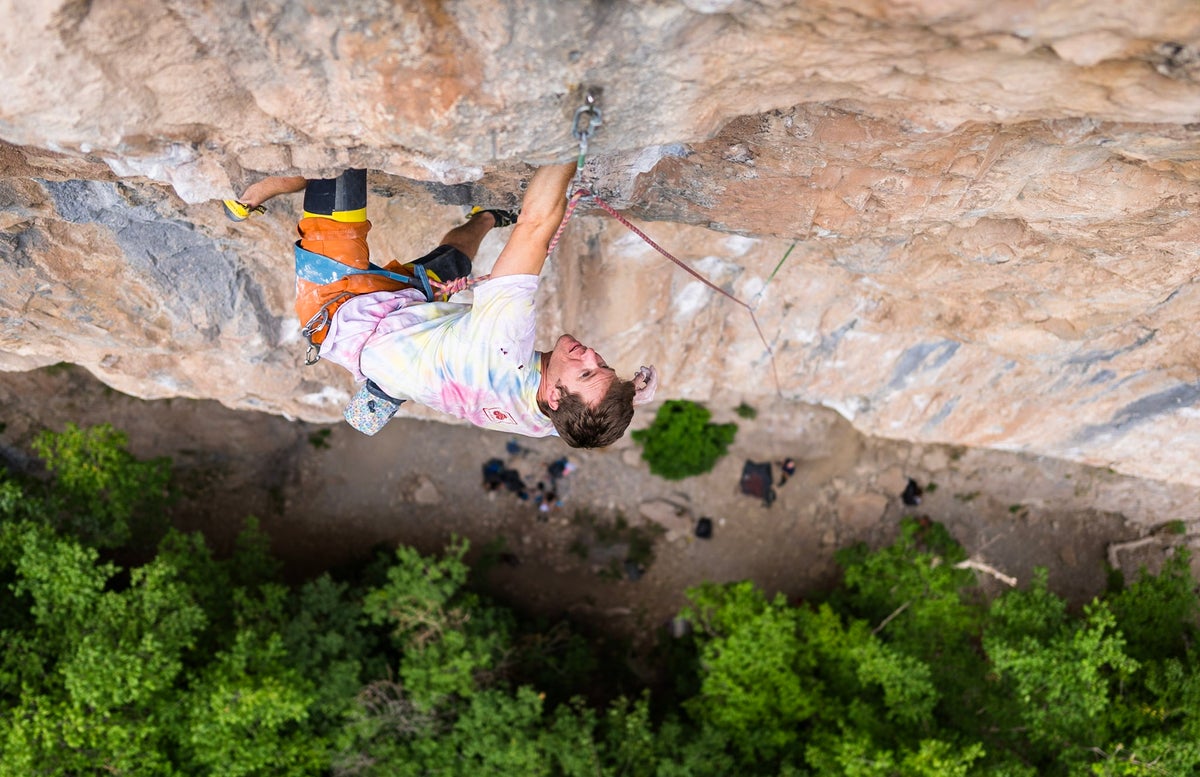
When working on limit projects, it’s too easy for “failure” to feel “safe.” To maximize his performance, Brian Stevens decided to try adding stakes.
The post Want to Send Your Project? Be Willing to Walk Away. appeared first on Climbing.
]]>
The Project Wall in Rifle Mountain Park becomes an acquired taste—or an acquired masochism—by mid-October. The nearly north-facing wall sees just a few hours of sun in the summer months, with climbers queuing up for their projects early in the morning to capitalize on good conditions. However, as October rolls around, and nighttime temperatures in the canyon plummet below freezing, a shadowy, cold reality sets in. The once-enthusiastic early birds now procrastinate, hoping for a few hours of just-warm-enough sending conditions before the impending snow shuts the canyon down for the season. And so there I was again, last October, doing the exact same routine as the week before, and the week before that, and the week before that: right kneepad, left kneepad, right shoe, left shoe, duct tape, chalk bag. My belayer, comfortably dressed in multiple layers and puffy pants, inspected his belay device and my knot while I, shivering in shorts and a t-shirt, straddled the fine line between stoke and an almost existential question: am I truly psyched, or am I just desperate?
Sport climbing—or, more specifically, mega projecting sport climbs—is a strange activity even to those of us who do it, so from an outside perspective, it must seem even more odd. Go climb on the same route over and over again, sometimes for multiple seasons or years, hoping to go from the bottom to the top without falling. Of course, there’s more to the story. We whittle the route down and employ certain tactics that help us make it a flawless choreography. We refine the beta. We work on overlapping links. We start from below the crux and attempt to climb to the chains. We climb the crux two, three, even four times in a row to ensure mastery while tired. We strive for the one-hang to let us know the send is close. But despite the training and tactics, we still show up day after day, hoping that, on one of those days, something will be different.
I thought about this a lot during my fall season of 2023. I was deep in the pit of despair with my Rifle project, Let It Burn (5.13d). The route is a 35-meter, rope-stretching endurance marathon on the left side of the Project Wall. A variation, it climbs the first half of the classic Sometimes Always (5.13c) before moving left, avoiding that route’s notorious technical stem-crux in exchange for two sustained crux sections. While the first half of the route consists of big holds peppered with standard Rifle knee crawling, the second half is very different. The rock becomes less blocky and the holds are smaller. The climbing is straightforward, but there’s little room for “trickery” like that found below. You’re either fit enough when you get there or you aren’t.
There was nothing at stake. I could always try again. And that, as it turns out, was a bit of a problem.
Every time I tied in, I found myself one-hanging the route. The conditions didn’t matter. How I felt didn’t matter. I was falling at the left-hand undercling at the 9th bolt, more than halfway up the route. I’d rest, pull back on, sometimes lower down for an overlap, and then head to the chains. The weeks were blending together like my own personal Groundhog Day. Every Thursday I’d rush home and pack the car. I’d clean the kitchen, and spend time with my wife, who was “88% okay” with me being gone every weekend. On Friday, I’d speed off on the 3.5-hour drive to Rifle, music blasting. In my sleeping bag in the back of my minivan at camp, I’d re-watch episodes of Emily in Paris. I’d warm up on the same routes in the morning. I’d wait for the wind to pick up and tie in for a redpoint go. But just like the Emily in Paris reruns, I knew the ending.
I’d been to this self-created hell before. I fell at the final bolt of No Philter (5.13d) at Seal Rock in the Flatirons fifteen times before sending it in the spring of 2023. But the route was close to my house—I could see it from my damn porch, taunting me!—and easy enough to get to that I could give burns after work. The thought of giving up never occurred to me, despite dreaded rinse-and-repeat monotony. There was nothing at stake. I could always try again. And that, as it turns out, was a bit of a problem. Since the process was easy and fun, there was no pressure to finish, which—I eventually realized—kept me from summoning the maximum, last-go, best-go effort we sometimes need to do our hardest routes.
Finding myself in this position once more with Let It Burn, I wondered if there was a way to arbitrarily increase the stakes? Sure, it was still a 3.5 hour drive, but how could I— a weekend warrior, armed with an 8a.nu scorecard, a penchant for grade-chasing, and seemingly all the time in the world—further ramp up the pressure to potentially increase my performance?
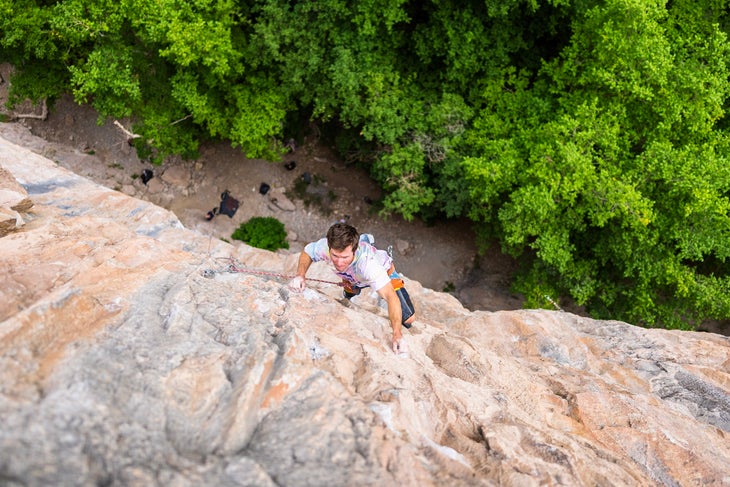
Several summers ago, I met Ben Gilkison while on a trip in Ten Sleep, Wyoming. He was road tripping with his wife and two young daughters. While his family supported him at the crag, his familial needs limited his time. He couldn’t drag his family back to the same crag and to the same route over and over again, so his motto was “One try, no second chances,” and on that try he tried hard—like, really hard. And it worked for him. His daughters cheered him on while he onsighted Shake ’n Bake (5.13b), climbing like it was the last route he’d ever climb in his life. I also watched him on Name of the Game (5.13a): he nailed every sequence up until the final move, where he fell. “I wanted it bad,” he said as he lowered to the ground. There was no excuse. He took the wins and the losses in stride. But he played his best.
As a kid, I struggled with the win/lose mentality. While my teammates shed tears over lost Lacrosse games, I’d suck on the post-game orange slices and reflect on my individual performance. Did I play well? If so, I didn’t care about the outcome. This, of course, is antithetical to most competitive sports; the football teams in the Super Bowl go out ready to do battle, because they may never get this chance ever again. My lackadaisical attitude seemed to work quite well in climbing until Ben’s ability to simulate a high-pressure situation showed me otherwise.
But of course, Ben’s “one try, no second chances” model couldn’t work for me on a route like Let It Burn. It took me a full season just to figure out all the moves! It was at my limit and demanded time. But I still needed to find a way to incorporate that sense of urgency into my climbing in order to escape from the dreaded one-hang purgatory.
That’s the answer, I thought after listening to the Power Company’s podcast episode “Failure: How Quitting More Leads to Bigger Sends,” in which Kris Hampton and Annie Duke talk about how we tend to stick to our goals instead of looking to other things that could make us happy or help us reach bigger goals. When things go wrong—when we get to one-hang purgatory—we tend to get more invested in our original plan, arguing that we’ve already invested too much time or resources to give up now. It can be hard to remember that climbing the same route over and over again—even if it’s at your limit—doesn’t make you a better climber, it just makes you better at that specific route.
Hampton and Duke suggest creating “kill criteria,” which is a literal checklist that prevents us from getting bogged down. If we can check certain items off, we can continue projecting our route. If we can’t, we need to re-examine our goal or quit. The important part of this kill criteria is including a condition and date. By adding a deadline and a specific benchmark to our goal, we avoid continuing with no direction. A simple example could be if I haven’t one-hung the route by X date, I need to move on. We are forced to maximize our effort because we’ve created a limit on how long we can continue. If we aren’t meeting our goals, then we move on to other more attainable ones, with the option to return to this one later. However, we want to avoid having our goals be so attainable that we always meet our kill criteria.
Hearing this, I worried at first that there would emotional downsides to forcing myself to perform under pressure—the idea that I might have to win or lose with various rock climbs—but, after some reflection, I realized that I’m not unfamiliar with the process of using kill criteria, and that some of the most satisfying climbing experiences of my life were the result of these types of scenarios.
As teachers, my wife and I travel during school breaks. When visiting a new location, I tend to explore the area and climb routes I can easily do. But on the few occasions when I’ve decided to try closer to my limit, there’s a natural kill criteria built into my relationship with each climb: the end of the trip. In El Salto, Mexico, in 2019, I dedicated the entire two weeks to Camino del Chino (5.13b). On the last try of the last day, when I was forced to perform at my best, I sent. In that instance, the trip was successful because I put myself in a situation without guaranteed success and I rose to the occasion.
But I’ve also walked away without the send. In Kalymnos, in 2022, I fell on the final hard move of Marci Marc (5.13a) on the final day of our trip. The conditions were great, I tried my hardest, but I couldn’t get it done. We spent the rest of the day at the beach and then caught our flight home the next day. When two teams play, there’s a winner and a loser. Yet even though I was the loser on that trip, I wouldn’t define the trip as a failure; I still put myself in a situation without guaranteed success—and just knowing that I’d tried hard was enough to be satisfying.
Still, experiences like these were anomalies. In general, I avoided situations like that on Camino del Chino or Marci Marc. Maybe that’s what was initially so attractive to me about projecting: I rarely exposed myself to failure, pressure, or the need to “turn it on” and try my hardest. Instead, I’d pick something so hard that success was only a distant option—which made the process more comfortable.
In the same failure episode, Kris Hampton suggests practicing failure by intentionally putting ourselves in situations in our training where success isn’t guaranteed and we may have to walk away with no tangible results. The key is to normalize failure and quitting, viewing them as opportunities for learning rather than negatives. In the gym, for instance, you might give yourself three attempts on a hard boulder problem or try to onsight a difficult route. If you can’t do it in the alloted time, then move on for that session, or altogether. This forces a more significant up-front effort, and it also helps us practice working through little mistakes. With limits, we create a win-loss paradigm similar to many sports, where the outcome is final.

It had been almost a month since I met my last kill criteria on Let It Burn. I had one-hung the route by the end of August 2023. I had started from the good rest a few bolts below the crux and gone to the chains by mid-September. The final kill criteria was to send. I set the date for a long weekend in mid-October as my last chance of the season. Not, “Oooh, next weekend looks pretty nice, I’ll go give it another shot.” No. Done. That weekend would decide whether I’d “win” or “lose” this season.
-
Related: Alex Megos talks about how his Olympic disappointment helped him send two of his hardest routes
That final weekend was no different from any other. My friend Jacob and I stood below Let It Burn. The summer-camp crowds had dissipated. Those that remained bemoaned the coming winter. Fallen leaves adorned the ground, and the sun struggled to reach the canyon floor. Jacob, offering his customary encouragement, urged me to “try hard” and “let the big dog out.”
I felt terrible as I made it to the meager rest before the move on which I had fallen twenty times. My body was fatigued, forearms pumped, and the shallow right kneebar was slipping. Switching to the less restful left knee, I shook my right hand hard. Without much thought, I started the crux, anticipating another fall. To my surprise, my left hand stuck the undercling, and I stood tall, hitting the next crimp as my body seemed to drift away from the wall. A moment of pause, and, like a scene from Bill & Ted’s Excellent Adventure, I uttered, “Whoa.”
As I latched that crimp on Let It Burn, doubt entered my mind. Cool, I’ve done the move I hadn’t been able to do, I thought. But I feel pretty bad. Maybe I’ll take here and try tomorrow.
But then I remembered that there was no tomorrow—not for Let it Burn. I had only this one chance to succeed and define the season. Suddenly—and with friends cheering below in the autumn sunshine—I realized I had been afraid of this moment. I had been scared to find myself in a position where I would have to try as hard as I could and know I could still fail. But I pushed, and I pushed, and a few minutes later I was clipping the chains.
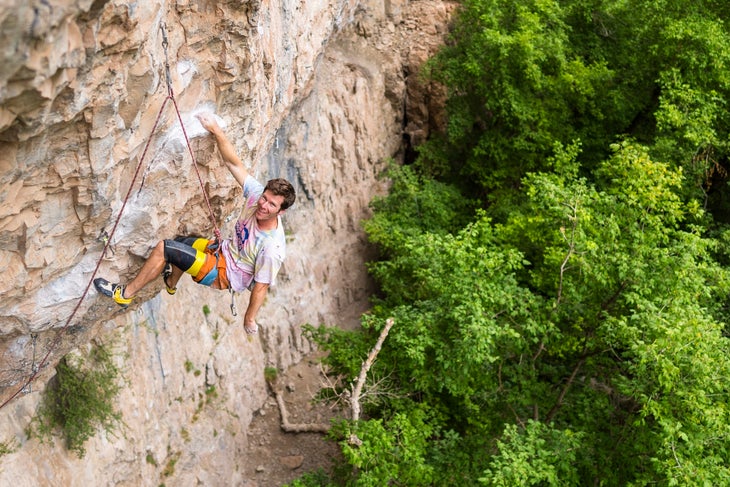
As I drove out of the canyon that evening, leaves swirled into the open windows of my car. I thought of something a Norwegian climber said to me years ago:“You Americans are so funny, driving around in your silly vans, posting on Instagram about how you sent on the last try of the day. Of course you sent on the last try; after you send, you aren’t going back to try again!”
Perhaps we need to give ourselves a last try—a real last try—more often to unleash our competitive athlete and “let the big dog out.”
Also by Brian Stevens: Stop Using “Redpoint Mode” As An Excuse to Skip the Line
The post Want to Send Your Project? Be Willing to Walk Away. appeared first on Climbing.
]]>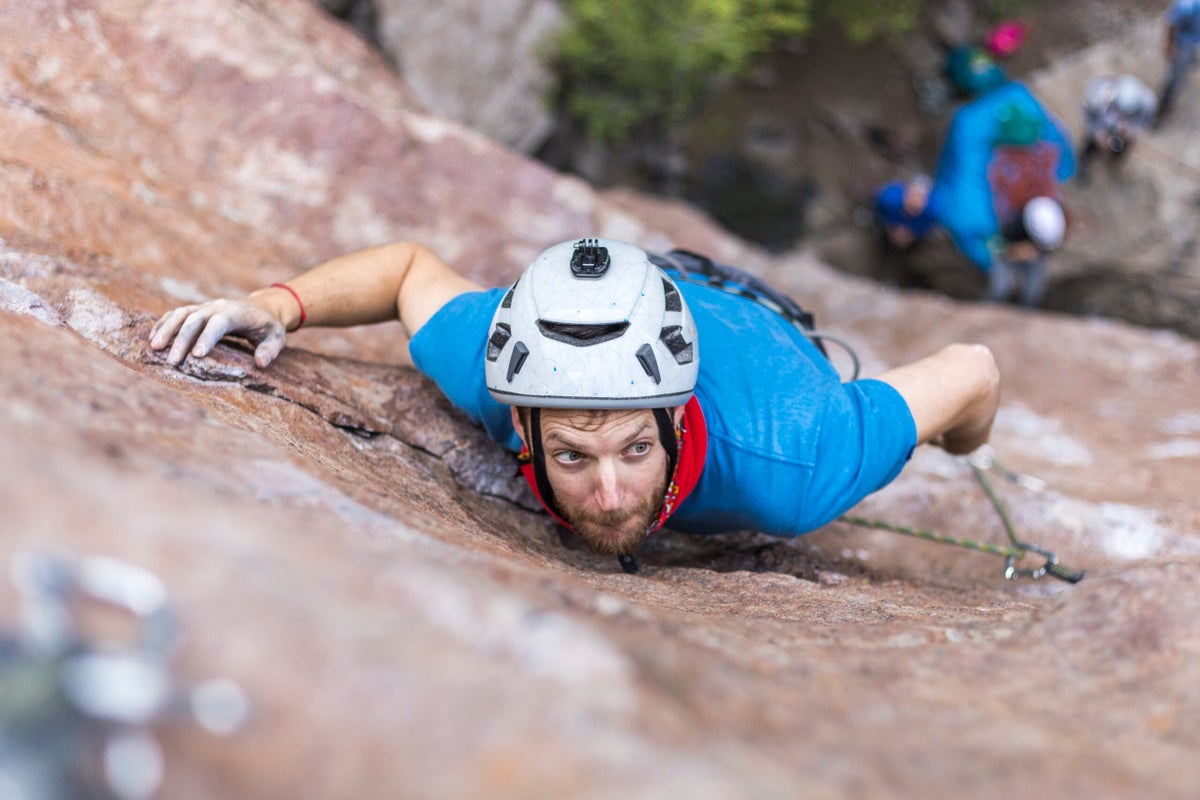
Unless, of course, you're literally about to blitz up the route in a matter of minutes.
The post Stop Using “Redpoint Mode” As An Excuse to Skip the Line appeared first on Climbing.
]]>
Redpoint Mode (n):
The state of being close to sending. See Redpoint.
I first heard the term redpoint mode misused at The Dog House in Clear Creek Canyon, Colorado, an often crowded sport crag. Because of my trad-dad roots, my buddy Andy and I had gotten an early start and were the first at the wall. We warmed up on Hot Dog (5.11b) and made our way to the goal for the day, the popular Big Dog (5.12b). As we geared up, we noticed four guys approaching up the hill and beelining straight for us. Out of breath, the leader of the pack asked, “Are you guys getting on Big Dog?”
“We are,” I said, with a bit of sarcasm. Was our neatly flaked rope at the base of the route not an obvious enough sign?
“Have you been on it before?” He asked, seeming desperate.
“No, neither of us have.”
“Oh, ok, cool, cool,” he continued, with a sigh of relief. “Well, I’m in total redpoint mode on this rig, so would you mind if I cut in and give it a quick burn? I’ll be really quick, and you can see some beta.”
Andy and I looked at each other, eyes rolling. There wasn’t a rush, we had all day. This would give us some time to have a quick snack and gather some beta, making our burns more efficient.
As Andy and I lounged and snacked, basking in the warm winter sun, it was clear that really quick and redpoint mode weren’t that at all. Not only did it take him almost 30 minutes to get ready, fussing with his shoes, taping a finger, fondling his stick clip, but he then hung at the first bolt, and the second, and the third…
Climbing jargon can be like another language if you’re not in the know. I suddenly felt like Inigo Montoya in The Princess Bride; “You keep using that word, I do not think it means what you think it means.”
**
Turn-Taking at the Crag
A few summers back, my wife and I explored the climbing scene in Germany’s Frankenjura. While the climbing was amazing, we were most struck by the country’s remarkable efficiency. In Nuremberg on rest days, we admired the escalator etiquette. People stood on the right, leaving the left free for those walking briskly. Driving on the autobahn reinforced the concept of sticking to the right lane. If you didn’t, an Audi passing at 90 mph would turn you into bratwurst.
Efficiency isn’t always widespread. Yet, you’ve likely experienced a similar situation at a busy intersection. There, a considerate driver breaks the deadlock by signaling for you to proceed. It’s a testament to unspoken coordination in high-traffic scenarios. You might even have found yourself being the kind person, gesturing for others to go ahead!
Over the years, I’ve noticed a similar trend in sport climbing areas around the US and abroad. Climbers collaborate at bustling crags, attempting to establish some semblance of order. While the ethos of “first come, first served” prevails, there’s also a mindset of giving way to someone more prepared.
When you’re trying a route at your limit for the first time, it can be a major endeavor. It’s possible, and likely, that a first-time beta burn can take anywhere from 30 minutes to an hour. To minimize inconvenience, I’ve always strived to try a route for the first time at off-peak hours. I’ll climb early in the morning when it’s too cold for those trying to send. I’ll sweat it out in the afternoon heat when others are taking their siestas, waiting for the cool evening temps. If those options aren’t viable and I’ll be monopolizing prime climbing conditions, I make it a point to ask, “Is anyone in redpoint mode?”
Aside from my encounter in Clear Creek Canyon, I’ve found that climbers are usually honest about their attempts. Redpoint mode, for me and most climbers, translates to, I’m likely to send, but if I fall, I’m coming straight down. Perhaps they’ll rehearse the crux sequence after a fall. More often than not, their attempt is quicker than tying your shoes. Most people have embraced this ideology. It’s even found in guidebooks when discussing crag etiquette. Dave Pegg wrote in his 2013 Rifle Mountain Park, “If you are at the humble stage of working a route, which in Rifle can easily eat up an hour-long session, it is considered good form to ‘give way’ to a climber trying to redpoint the route.”
Whether it’s due to dishonesty, competition, or ambition, there’s always one or two people who don’t quite get it. What these people view as redpoint mode seems to be 15 minutes of prepping, followed by an epic working burn. If their lengthy turn had been communicated and agreed upon, it’d be fine. But the person who is in redpoint mode loses their warm up, and instead inadvertently sits around in their tight shoes and duct-taped kneepads like a dope, because they were ready. Everyone has the right to climb what they want, but we need to be honest about our efforts. This way, we can all adjust and prepare accordingly.
I’ve earned a reputation from friends as a bit of a diva when getting ready for my burns. It’s a routine: a sip of water, a nervous pee, a handful of sour patch kids, another sip of water, a quick swipe of chapstick, kneepads on, shoes on, discover a rock in my shoe, shoes off and on again…
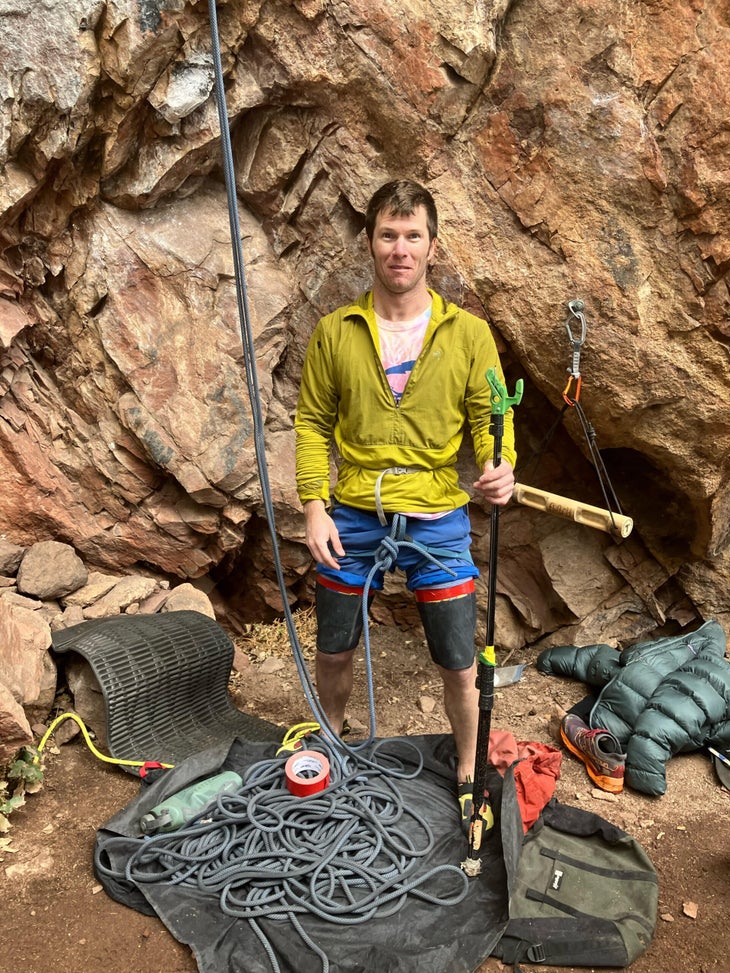
I’ve also been referred to by others, not so affectionately, as “The Crag Warden.” I have 15 years of experience as a middle school science teacher. I interact with hormonal, defiant, and sometimes smelly teenagers every day. Maintaining order at a crowded crag isn’t much different than an 8th grade classroom. Over the years, I’ve learned that my turn starts as soon as the person before me touches the ground. I try to do all my primping and prepping before my clock starts ticking. Time, and the route, are things we all share, so it’s important to respect that.
I also try to be honest about my plans. If I’m in redpoint mode, I’ll check with the others in line. If I know my burn is going to take a long time, I’ll be honest about it and try to let a more prepared climber go first. Plus there’s the added bonus of gathering the perfect beta for the move that’s been shutting me down!
**
In climbing, as in driving, we share a common space. Sometimes you’ll hear someone grumbling about how much they hate traffic. It’s as if they think everyone else loves sitting around, breathing in exhaust fumes, and arriving late. This is likely the same person who shows up at a popular crag, complaining about how crowded it is.
Climbing is not only an individual challenge; it’s a collective experience. Much like the rules of the highway, a day at the crag involves signaling our intentions. Everyone’s trying to get to their destination. Let’s be a community where honesty, efficiency, and a shared appreciation for the rock are the norm. This can enhance everyone’s experience. We’re all part of the same traffic figuring out the best way to navigate and share the joy of sending.
Also Read:
The post Stop Using “Redpoint Mode” As An Excuse to Skip the Line appeared first on Climbing.
]]>